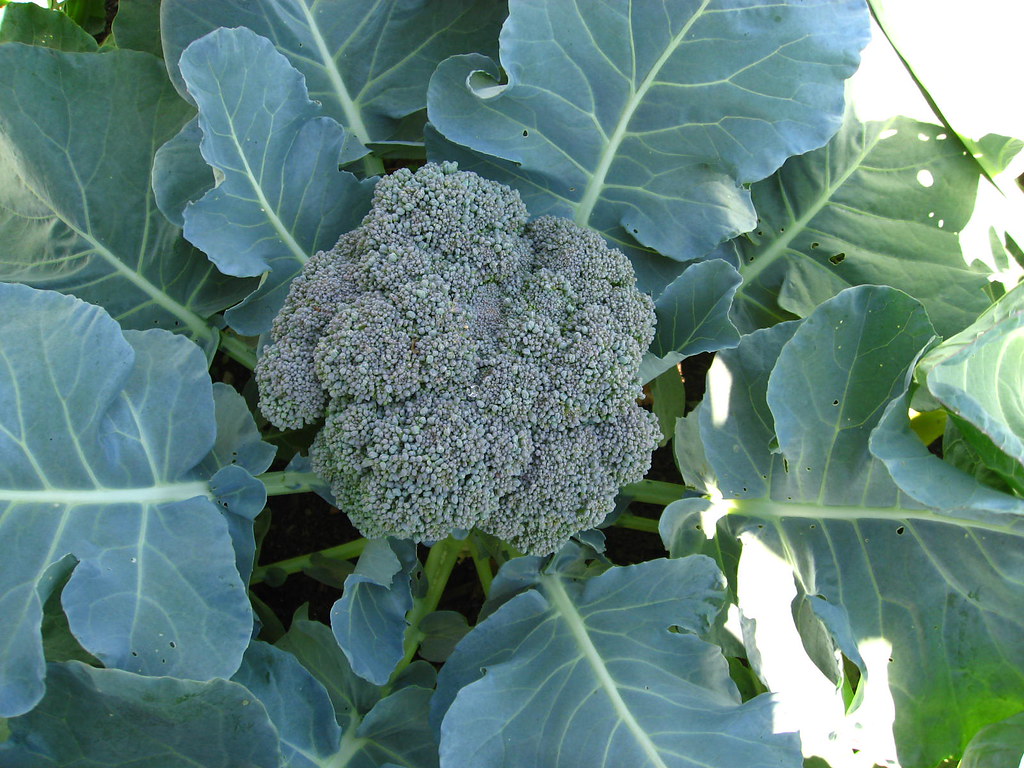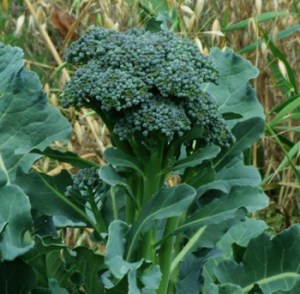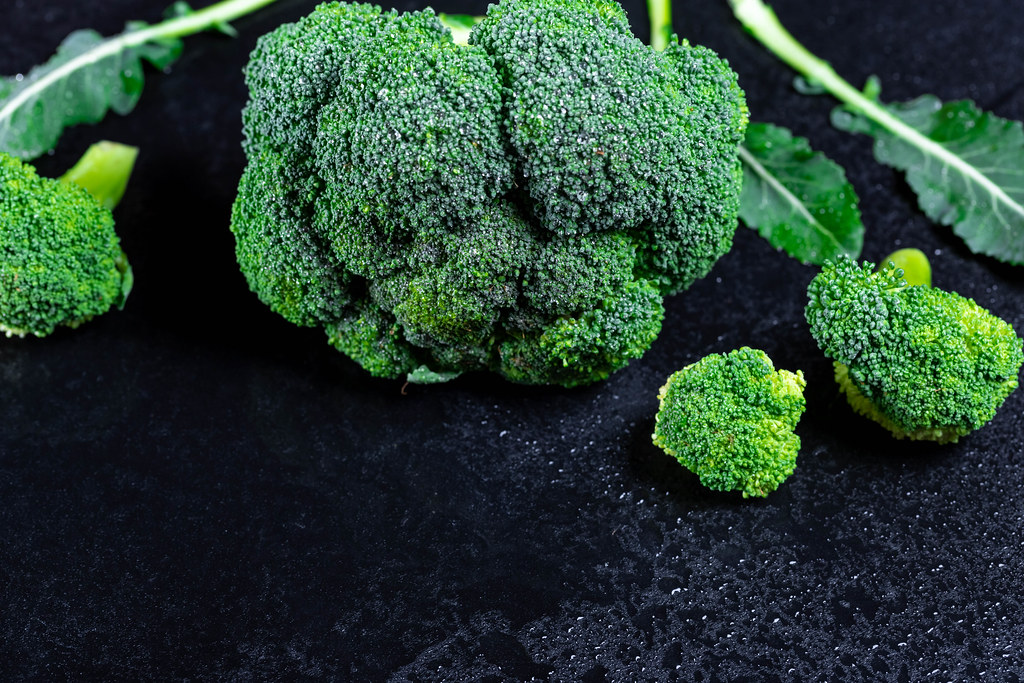What is Broccoli?
Broccoli is essentially a large edible flower. The stalks and flower florets are eaten both raw and cooked and have a flavor reminiscent of cabbage, though broccoli is also related to kale. cauliflower and brussel sprouts.
Broccoli is a fast-growing annual plant that grows 60–90 cm (24–35 inches) tall. Upright and branching with leathery leaves, broccoli bears dense green clusters of flower buds at the ends of the central axis and the branches. If left unharvested, those buds bear yellow flowers with four petals and produce silique fruits (a dry capsule). Broccoli thrives in moderate to cool climates and is propagated by seeds, either sown directly in the field or in plant beds to produce transplants. The heads, or florets, reach harvest in 60 to 150 days, depending upon the variety and the weather.
Although some cooks do enjoy them prepared in the manner of chard or kale, the bitter leaves are usually discarded in preparing broccoli for a meal. Depending on which type of broccoli you get, though, their taste can range from mild to extremely bitter.
3 various types of broccoli
 Calabrese is the most familiar, with large green heads and thick stalks, and is named after Calabria, the region in Italy where it was first cultivated. It is planted in spring and farmed in August.
Calabrese is the most familiar, with large green heads and thick stalks, and is named after Calabria, the region in Italy where it was first cultivated. It is planted in spring and farmed in August.
 Sprouting broccoli has a larger number of heads with many thin stalks. It is planted in May to be harvested during the winter or early the following year.
Sprouting broccoli has a larger number of heads with many thin stalks. It is planted in May to be harvested during the winter or early the following year.

Romanesco broccoli has numerous small cone-shaped heads arranged in spirals, and is yellow-green in color.White and purple varieties are also available in some areas.
History of Broccoli
Broccoli (Brassica oleracea italic) has been around for roughly 2,000 years. It is native to the Mediterranean region and was engineered from cabbage, a close relative, by the ancient Etruscans. When first introduced into England, it was called “Italian asparagus” and even though it has been cultivated since the 1500s, broccoli did not really become popular in the United States until about 1920. Broccoli has been considered a very valuable food by the Italians since the Roman Empire. Roman references to a cabbage-family vegetable that may have been broccoli are not entirely clear. The Roman natural history writer Pliny the Elder wrote about a vegetable that fits the description of broccoli and some vegetable scholars recognize broccoli in the cookbook of Apicius.
It is first mentioned in France in 1560, but in 1724 broccoli was still so unfamiliar in England that Philip Miller’s Gardener’s Dictionary (1724 edition) referred to it as a stranger in England and explained it as “sprout colli-flower” or “Italian asparagus.” In the American colonies, Thomas Jefferson was also an experimental gardener with a wide circle of European correspondents, from whom he got packets of seeds in exchange for rare vegetables from the Americas such as tomatoes. He noted the planting of broccoli at Monticello along with radishes, lettuce, and cauliflower on May 27, 1767. Nevertheless, broccoli remained an exotic plant in American gardens. In 1775, John Randolph, in A Treatise on Gardening by a Citizen of Virginia, felt he had to explain about broccoli: “The stems will eat like asparagus and the heads like cauliflower.”
Commercial cultivation of broccoli in the United States can be traced to the D’Arrigo brothers, Stephano and Andrea, immigrants from Messina, Italy, whose company made some tentative plantings in San Jose, California in 1922. A few crates were initially shipped to Boston, where there was a thriving Italian immigrant culture in the North End. The broccoli business boomed, with the D’Arrigo’s brand name “Andy Boy” named after Stephano’s two-year-old son, Andrew, supported by advertisements on the radio.
Benefits of Broccoli
Broccoli is high in vitamin C and dietary fiber and contains many nutrients that have potent anti-cancer properties, such as diindolylmethane and small traces of selenium. One serving has more than 30 mg of vitamin C and half a cup can provide 52 mg of vitamin C. “The 3,3’-Diindolylmethane found in broccoli is a potent modulator of the innate immune response system with anti-viral, anti-bacterial, and anti-cancer activity. Broccoli also contains the compound glucoraphanin, which can be processed into an anti-cancer compound called sulforaphane, though the anti-cancer benefits of broccoli are greatly reduced if the vegetable is boiled. Broccoli is also an excellent source of indole-3-carbinol, a chemical which boosts DNA repair in cells and appears to block the growth of cancer cells.”
https://www.thespruceeats.com/broccoli-history-1807573 https://www.britannica.com/plant/zucchini https://www.ageofempires.com/news/pane-romano-a-peek-at-the-history-of-broccoli/ https://www.flickr.com/photos/22748341@N00/2638500179 https://strictlymedicinalseeds.com/product/broccoli-green-sprouting-seeds-organic/


Really great history Heidi!!